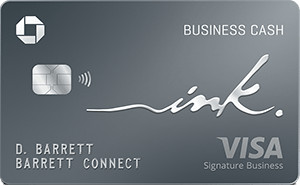⏰ Estimated read time: 4 minutes
FEATURED
What is annual business revenue?
How to report revenue for business cards
- Determine your gross annual revenue. This is your revenue before taxes and other expenses are taken out. This is different from profit, which is revenue minus costs.Gross revenue can include several sources of business income, such as selling business products and services, surplus equipment or property or even stock in your business.
- Exclude any personal income. If you work a full-time job and sell items on eBay as a side hustle, for example, income from your full-time job shouldn’t be considered “revenue.” Instead, include it in the “income” field of the application.
- Pull revenue from the right time frame. Your figures should be from the previous year. Generally, that means you shouldn’t be reporting sales projections as revenue, although some issuers may be OK with that if your business is new.
- Make sure you can verify any information. Don’t report it if you can’t verify it. In some cases, issuers may ask you for paperwork to back up the numbers you reported, so it’s best to stick to what you can prove.
- Update your revenue information as needed. Your company’s revenue can influence your credit limit. If your verifiable annual revenue improves after you’re approved, be sure to update that information with the issuer — especially if you want a business credit card with a higher limit.
🤓 Nerdy Tip
Does your business generate a lot of revenue? Consider a corporate credit card. These cards are only available to incorporated businesses, and approval is based on factors like annual revenue and money in the bank instead of personal credit. For businesses that qualify, corporate cards can offer greater spending power — with no personal guarantee.Can new businesses get a credit card without any revenue?
- Drive for a ridesharing service.
- Sell items online.
- Work as a freelance graphic designer.
NerdWallet rating 5.0/5.0 | NerdWallet rating 5.0/5.0 | NerdWallet rating 4.6/5.0 |
Annual fee $0 | Annual fee $150 | Annual fee $0 |
Regular APR 18.49%-24.49% Variable APR | Regular APR N/A | Regular APR 18.49%-26.49% Variable APR |
Intro APR 0% intro APR on Purchases for 12 months | Intro APR N/A | Intro APR 0% intro APR on purchases for 12 months from the date of account opening |
Recommended credit score 690-850good - excellent | Recommended credit score 720-850excellent | Recommended credit score 690-850good - excellent |
at Chase | at Capital One | at American Express |




